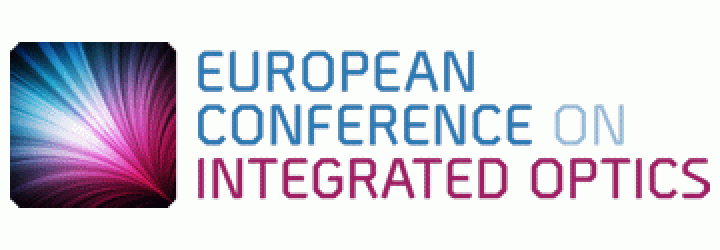Coherence Comb Laser Sources: Quantum Dots, Packaging and Active Control
Zhenguo LU
National Research Council Canada
We have successfully developed several InAs/InP quantum-dot (QD) C-band coherence frequency comb laser sources with the frequency spacing from 10 GHz to 100 GHz with the total output power of up to 50 mW in telecommunication industry for Tb/s high speed optical transmission networking systems. In this talk, we will present our advanced in-house QD growth, laser chip design, nano-fabrication, characterization, packaging and electrical fast-feedback-loop control systems.
Indium phosphide monolithic photonic integrated circuits for gas sensing applications
S. Latkowski1*, P.J. van Veldhoven1, A. Hänsel2, D. D’Agostino1, H. Rabbani-Haghighi1, B. Docter3, N. Bhattacharya2, P. Thijs1, H. Ambrosius1, M. Smit1, K. Williams1 and E.A.J.M. Bente1
1COBRA Research Institute, Eindhoven University of Technology De Zaale, 5612 AJ, Eindhoven, The Netherlands
2Optics Research Group, TU Delft, 2628 Delft, The Netherlands
3EFFECT Photonics B.V., Torenallee 20, Eindhoven, The Netherlands
* S.Latkowski@tue.nl
In order to extend the scope of potential applications for the generic photonics integration technology platforms [1] it is desired to widen the range of spectral bands covered by such integration technologies. Access to wavelengths in the mid-infrared range at around 2µm would make it particularly attractive for gas sensing applications due to presence of strong absorption lines of many gas species e.g. acetone and ammonia. Therefore, a development of long-wavelength (2 µm) active-passive monolithic integration technology on indium phosphide substrate with use of strained multi-quantum wells (MQW) was undertaken at the COBRA Research Institute [2]. Along with the technology development a novel tunable laser design featuring an asymmetric Mach-Zehnder interferometer (AMZI) based intra-cavity filter suitable for single line gas spectroscopy has been proposed [3]–[5] . The device has been fabricated within a multi-project wafer (MPW) run using such long-wavelength technology as presented in Fig. 1.
Development of active-passive regrowth for buttcoupled lasers in membrane photonic integrated circuits
Vadim POGORETSKIY*, Aura HIGUERA-RODRIGUEZ, Yuqing JIAO, Rene P.J. van VELDHOVEN, Jos J.G.M van der TOL, Dominik HEISS, Meint K. SMIT
COBRA Research Institute, Technische Universiteit Eindhoven
De Zaale, Eindhoven, 5600 MB, The Netherlands
* v.pogoretskiy@tue.nl
Introduction: Photonic integration on membranes can be used to combine electronic and optical functionality. An InP membrane on Si (IMOS) [1] is an advantageous solution, since it can include lasers, detectors and waveguide devices. In order to scale down the footprint of active devices such as photonic crystal nanolasers (Fig. 1a.), active passive regrowth is necessary. This paper reports on the design of the active layer stack and development of an active-passive regrowth process for integrated active devices which are butt-coupled to membrane waveguides. A first realized structure with this technique is shown in Fig. 1b.
On-Chip Multiple Colliding Pulse Mode-Locked Laser for Millimeter and Terahertz Wave Generation
Carlos D. GORDON1*, Mu Chieh LO1, Robinson GUZMAN1, Vinicio CORRAL1, Guillermo CARPINTERO1
1Universidad Carlos III de Madrid, Av. de la Universidad N°29,
Madrid, 28911, Spain.
* ingcarlosgordon@gmail.com
We report a novel on-chip multiple colliding pulse mode-locked (ocMCPM) semiconductor laser source for the generation of an optical pulse train at millimeter wave frequency repetition rate, generating a repetition rate at a higher harmonic of the fundamental laser round-trip frequency. We demonstrate a repetition rate at 100 GHz (within the millimeter wave frequency range), using a resonator cavity length with fundamental repetition rate at 25 GHz. As the optical pulse train output is generated within the chip, thanks to integrated mirrors, further increases of the repetition rate are possible, through an optical clock multiplier (OCM) scheme, in order to reach 300 GHz, for terahertz wave generation.
Narrow Line Width Injection-locked III-V-on-silicon Mode-locked Laser
Sarah UVIN1,2,*, Shahram KEYVANINIA3, Francois LELARGE4, Guang-Hua DUAN4, Bart KUYKEN1,2, Gunther ROELKENS1,2
1Photonics Research Group, INTEC, Ghent University – imec, Ghent, Belgium 2Center for Nano- and Biophotonics (NB-Photonics), Ghent University, Ghent, Belgium
3Fraunhofer Heinrich-Hertz-Institut Einsteinufer 37 10587, Berlin, Germany 4III-V lab, a joint lab of ’Alcatel-Lucent Bell Labs France’, ’Thales Research and Technology’ and ’CEA Leti’, France
* sarah.uvin@intec.ugent.be
Coherent optical orthogonal frequency division multiplexing (OFDM) systems are highly desirable for spectrally efficient optical communication systems. To implement such systems, an optical frequency comb source that can generate an array of narrow line width lines with a fixed phase relation is required. Integrating mode-locked lasers (MLL) on a silicon photonics chip could tackle these problems. However, to meet the demanding requirements of coherent communications, the MLLs need to have both a low timing jitter and its longitudinal modes need to have a narrow optical line width.

